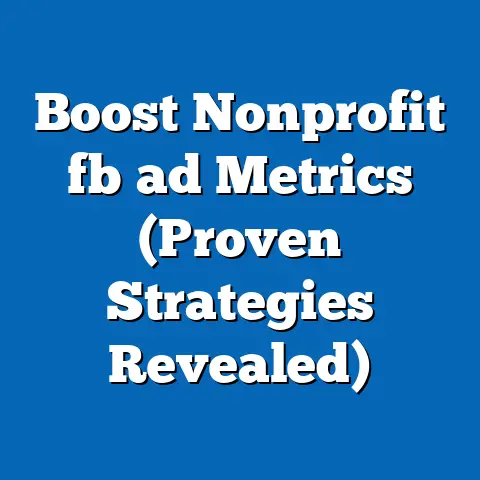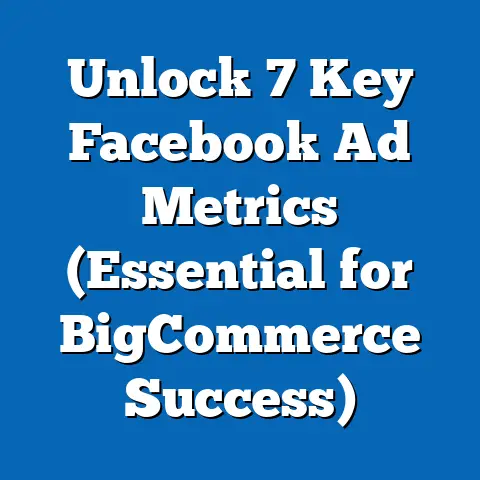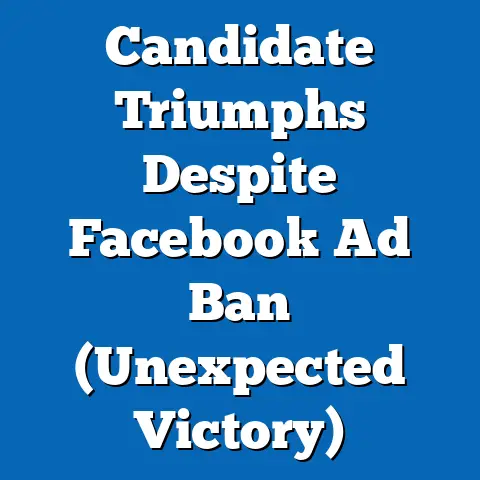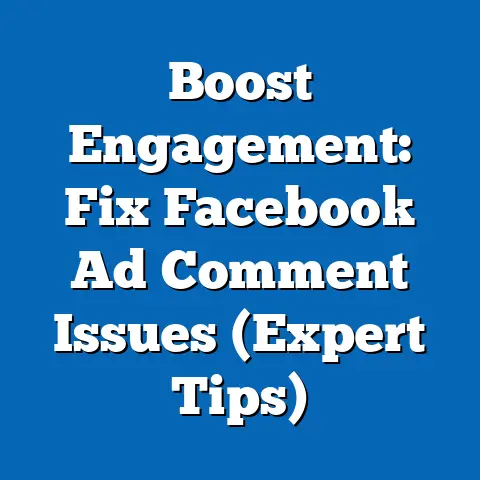Boost Engagement with Phone Numbers in Facebook Ads (Pro Tips)
I’ve seen countless businesses pour money into Facebook ads, hoping for a magic formula that will unlock a flood of customers. They meticulously craft stunning visuals, agonize over the perfect copy, and obsessively tweak their targeting. Yet, so many of them miss a crucial, often-overlooked element: the humble phone number. It’s like building a beautiful store but forgetting to put a sign out front!
The truth is, in today’s fast-paced digital world, direct communication is still king. People crave connection and immediacy, and a phone call can bridge the gap between curiosity and conversion faster than any click-through rate. If you’re neglecting the power of phone numbers in your Facebook ad strategy, you’re leaving money on the table.
1: The Importance of Phone Numbers in Facebook Ads
We live in a world of instant gratification. People want answers now, not after filling out a form and waiting for an email response. That’s where the power of a phone number comes in. It offers immediacy, a human connection, and a chance to address concerns directly.
The Growing Trend of Direct Communication
While digital marketing continues to evolve, the desire for direct communication remains a constant. In fact, I’ve observed a resurgence of interest in phone communication, driven by the need for personalized service and instant problem-solving. Think about it: when you have a pressing question about a product or service, wouldn’t you rather speak to a real person than wade through endless FAQs?
This trend is fueled by several factors:
- Increased Customer Expectations: Customers expect businesses to be readily available and responsive.
- Complex Products/Services: For intricate offerings, a phone conversation can provide clarity and build confidence.
- Urgency: When time is of the essence, a phone call is the quickest way to get answers.
- Building Trust: Speaking directly to a representative can establish trust and rapport.
Consumer Behavior: Stats Speak Volumes
Don’t just take my word for it – the data backs up the importance of phone communication.
- According to a recent study by HubSpot, 82% of customers rate an “immediate” response as important or very important when they have a marketing or sales question. A phone call is the epitome of an immediate response.
- Invoca reports that calls convert to revenue 10-15 times more often than web leads. This highlights the high-intent nature of phone inquiries.
- Google found that 61% of mobile searchers said click-to-call was most important in the purchase phase. Mobile users, often on the go, value the convenience of a quick call.
These statistics paint a clear picture: phone communication is a powerful driver of engagement and conversion. Businesses that prioritize it gain a significant competitive advantage.
Phone Numbers as a Trust Signal
In the digital age, trust is paramount. Consumers are bombarded with countless ads and offers, making them wary of scams and unreliable businesses. A prominently displayed phone number can act as a powerful trust signal.
Here’s why:
- Legitimacy: A working phone number suggests that a business is legitimate and has a physical presence (even if it’s just a virtual office).
- Accessibility: It shows that the business is accessible and willing to engage with customers directly.
- Transparency: It implies transparency and a willingness to answer questions openly.
- Accountability: It provides a direct line of accountability, giving customers confidence that their concerns will be addressed.
I remember working with a local HVAC company that was struggling to generate leads through Facebook ads. We revamped their ads to prominently feature their phone number and saw an immediate increase in call volume and lead quality. Customers felt more comfortable reaching out to a business that seemed readily available and accountable.
Case Studies: Phone Numbers in Action
Let’s look at some real-world examples of how businesses have successfully utilized phone numbers in their Facebook ad campaigns:
- Local Service Provider (Plumber): A plumbing company ran Facebook ads targeting homeowners in their service area, offering emergency plumbing repairs. The ad featured a clear call to action: “Call Now for Immediate Assistance!” This resulted in a surge of calls from homeowners facing urgent plumbing issues, leading to numerous high-value service calls.
- E-commerce Retailer (Furniture): An online furniture retailer used Facebook ads to promote a limited-time sale. The ad featured a phone number and encouraged customers to call for personalized assistance with product selection and ordering. This resulted in higher average order values and increased customer satisfaction.
- Real Estate Agent: A real estate agent ran Facebook ads targeting potential homebuyers in a specific neighborhood. The ad featured a phone number and invited viewers to call for a free consultation. This resulted in a steady stream of qualified leads who were actively looking to buy a home.
Takeaway: Phone numbers are more than just digits; they are a gateway to direct communication, trust-building, and increased conversions. By prioritizing phone engagement in your Facebook ad strategy, you can unlock a new level of connection with your audience and drive significant business results.
2: Crafting the Perfect Facebook Ad with Phone Numbers
Now that we understand the importance of phone numbers, let’s dive into the practical aspects of incorporating them into your Facebook ads. It’s not enough to simply slap a phone number on your ad; you need to strategically integrate it to maximize its impact.
Anatomy of a High-Performing Facebook Ad
A high-performing Facebook ad consists of several key elements:
- Compelling Visual: An eye-catching image or video that grabs attention.
- Headline: A concise and engaging headline that clearly communicates the value proposition.
- Description: A brief description that provides more detail and encourages action.
- Call-to-Action (CTA): A clear and persuasive CTA that tells users what to do next.
- Phone Number: A prominently displayed phone number that invites direct communication.
The phone number should be seamlessly integrated into this framework, working in harmony with the other elements to drive engagement.
Strategic Placement: Where to Put Your Phone Number
The placement of your phone number can significantly impact its visibility and effectiveness. Here are some options to consider:
- Headline: Including the phone number in the headline can be a bold move, especially for time-sensitive offers or emergency services. For example, “Call Now for 24/7 Emergency Plumbing Repair!”
- Description: The description is a prime location for your phone number, as it provides ample space to include it naturally. For example, “Learn more about our services and get a free quote. Call us today at [Phone Number]!”
- Call-to-Action Button: Facebook offers a “Call Now” CTA button, which is a highly effective way to encourage direct phone calls. This button is prominently displayed and instantly recognizable, making it easy for users to connect with your business.
- Image/Video Overlay: You can also overlay your phone number onto the visual element of your ad. This can be particularly effective for video ads, where you can display the phone number throughout the video or at the end.
I’ve found that the “Call Now” CTA button is generally the most effective option, as it’s specifically designed for phone engagement. However, testing different placements can help you determine what works best for your specific audience and ad campaign.
Formatting for Clarity and Ease of Use
The way you format your phone number can also impact its effectiveness. Follow these best practices:
- Use a clear and consistent format: Use a format that is easily recognizable and readable, such as (555) 123-4567 or 555-123-4567.
- Include the area code: Always include the area code to avoid confusion, especially if you’re targeting a wide geographic area.
- Make it clickable (on mobile): Ensure that the phone number is clickable on mobile devices, so users can easily call with a single tap. Facebook automatically converts phone numbers into clickable links on mobile devices.
- Use a dedicated landing page (optional): While the goal is to encourage phone calls, you can also link the phone number to a dedicated landing page that provides more information about your business and services. This can be a good option for users who want to learn more before calling.
Tracking: The Key to Measuring Success
It’s crucial to track the performance of your phone numbers to measure the success of your Facebook ad campaigns. This allows you to identify which ads are driving the most calls and optimize your strategy accordingly.
Here are some tracking methods to consider:
- Facebook Ads Manager: Facebook Ads Manager provides basic call tracking data, such as the number of calls generated by each ad.
- Call Tracking Software: Call tracking software provides more detailed data, such as call duration, caller demographics, and conversion rates. This allows you to gain a deeper understanding of your phone leads and optimize your campaigns for maximum ROI.
- Google Analytics: You can integrate Google Analytics with your call tracking software to track the entire customer journey, from ad click to phone call to conversion.
I always recommend using call tracking software for accurate and comprehensive data. It allows you to attribute phone leads to specific ad campaigns, keywords, and demographics, giving you valuable insights into your advertising performance.
Takeaway: Crafting the perfect Facebook ad with phone numbers requires strategic placement, clear formatting, and robust tracking. By optimizing these elements, you can create ads that effectively drive phone engagement and generate valuable leads.
3: Targeting the Right Audience for Phone Engagement
You’ve got a killer ad with a prominent phone number, but it’s all for naught if you’re showing it to the wrong people. Targeting is the cornerstone of any successful Facebook ad campaign, and it’s especially crucial when you’re aiming for phone engagement. You need to reach people who are not only interested in your products or services but also likely to pick up the phone and call.
Facebook’s Targeting Options: A Deep Dive
Facebook offers a wealth of targeting options that allow you to reach specific demographics, interests, and behaviors. Let’s explore some of the most relevant options for phone engagement:
- Demographics: Target users based on age, gender, location, education, and other demographic factors. This can be useful for reaching specific segments of the population who are more likely to respond to phone calls. For example, you might target older demographics who are less comfortable with online communication.
- Interests: Target users based on their interests, hobbies, and passions. This allows you to reach people who are actively interested in your products or services. For example, if you’re selling gardening supplies, you might target users who are interested in gardening, landscaping, or outdoor living.
- Behaviors: Target users based on their online behavior, such as purchase history, device usage, and travel habits. This can be useful for reaching people who are likely to take specific actions, such as making a phone call. For example, you might target users who have recently searched for “emergency plumber” or “urgent care clinic.”
- Custom Audiences: Create custom audiences based on your existing customer data, such as email lists, phone numbers, and website visitors. This allows you to target people who are already familiar with your business and are more likely to convert.
- Lookalike Audiences: Create lookalike audiences based on your custom audiences. This allows you to reach new people who share similar characteristics with your existing customers.
Demographic Targeting: Beyond the Basics
While basic demographic targeting can be useful, it’s important to go beyond the surface and consider the nuances of your target audience. For example, you might target different age groups with different messages and call-to-actions.
- Older demographics: May prefer phone communication for its personal touch and ease of use.
- Younger demographics: May be more comfortable with online communication, but still appreciate the option of a phone call for urgent matters.
Interest-Based Targeting: Connecting with Passionate Prospects
Interest-based targeting allows you to connect with people who are genuinely interested in your products or services. This can be a highly effective way to generate qualified leads who are more likely to convert.
When selecting interests, be specific and relevant. Avoid broad categories that might attract a lot of irrelevant traffic. For example, instead of targeting “sports,” target “baseball fans” or “basketball enthusiasts.”
Lookalike Audiences: Expanding Your Reach
Lookalike audiences are a powerful tool for reaching new people who share similar characteristics with your existing customers. This allows you to expand your reach and generate leads from a highly targeted audience.
When creating lookalike audiences, start with your best-performing custom audiences, such as your list of paying customers or your list of qualified leads. Facebook will analyze the characteristics of these users and create a lookalike audience that shares similar traits.
Testing and Optimization: The Key to Success
No targeting strategy is perfect right out of the gate. It’s crucial to test different targeting options and optimize your campaigns based on performance data.
- A/B testing: Test different targeting options against each other to see which ones generate the most phone calls.
- Performance monitoring: Monitor your campaign performance closely and make adjustments as needed.
- Audience refinement: Continuously refine your audiences based on the data you collect.
I’ve found that consistent testing and optimization are essential for maximizing the effectiveness of your Facebook ad campaigns. Don’t be afraid to experiment with different targeting options and see what works best for your specific business.
Takeaway: Targeting the right audience is crucial for generating phone engagement through Facebook ads. By leveraging Facebook’s targeting options and continuously testing and optimizing your campaigns, you can reach the people who are most likely to pick up the phone and call.
4: Creating Compelling Call-to-Actions
You’ve got a great ad, a clear phone number, and a perfectly targeted audience. Now, you need to seal the deal with a compelling call-to-action (CTA) that motivates users to pick up the phone and call.
A CTA is the final nudge that encourages users to take the desired action. It’s the moment of truth, where you either capture their attention or lose them to the endless scroll.
The Power of Words: Choosing the Right Verbs
The verbs you use in your CTA can significantly impact its effectiveness. Choose verbs that are action-oriented, persuasive, and relevant to your offer.
Here are some examples of effective verbs for phone engagement:
- Call: Simple, direct, and universally understood.
- Speak: Emphasizes the human connection.
- Talk: More casual and conversational.
- Connect: Highlights the opportunity to build a relationship.
- Get: Focuses on the benefits of calling.
- Discover: Creates curiosity and intrigue.
- Learn: Appeals to users who want more information.
- Request: Suggests a personalized service.
I often find that using strong, action-oriented verbs like “Call” or “Get” is the most effective way to drive immediate phone calls. However, testing different verbs can help you determine what resonates best with your target audience.
Phrasing for Persuasion: Crafting Compelling CTAs
In addition to choosing the right verbs, you need to craft compelling phrases that grab attention and motivate action. Here are some examples of effective CTA phrases for phone engagement:
- Call Now: Simple, direct, and creates a sense of urgency.
- Call Us Today: Similar to “Call Now,” but emphasizes the immediate timeframe.
- Call for a Free Consultation: Offers a valuable incentive for calling.
- Call for a Free Quote: Provides transparency and encourages price comparison.
- Call to Learn More: Appeals to users who want more information before making a decision.
- Call and Speak to an Expert: Highlights the opportunity to connect with a knowledgeable representative.
- Call Now for Limited-Time Offer: Creates a sense of urgency and scarcity.
- Call to Schedule Your Appointment: Encourages immediate action and commitment.
Urgency and Scarcity: Driving Immediate Action
Creating a sense of urgency and scarcity can be a powerful way to drive immediate phone calls. People are more likely to take action when they feel like they might miss out on a valuable opportunity.
Here are some examples of how to incorporate urgency and scarcity into your CTAs:
- Limited-Time Offer: “Call Now for 20% Off – Offer Ends Tonight!”
- Limited Availability: “Call Now to Reserve Your Spot – Only a Few Spots Left!”
- First-Come, First-Served: “Call Now to Get Your Exclusive Discount – First 10 Callers Only!”
I’ve seen these types of CTAs generate significant results, especially when combined with a compelling offer. However, it’s important to be genuine and avoid creating false scarcity.
Examples from Various Industries: Inspiration for Your CTAs
Let’s look at some examples of successful CTA strategies from various industries:
- Local Service Provider (Locksmith): “Locked Out? Call Now for Immediate Assistance – 24/7 Emergency Service!”
- E-commerce Retailer (Clothing): “Need Help Finding the Perfect Outfit? Call Us for Personalized Styling Advice!”
- Real Estate Agent: “Thinking of Buying or Selling? Call Now for a Free Market Analysis!”
- Healthcare Provider (Urgent Care): “Feeling Unwell? Call Now for Immediate Care – Walk-Ins Welcome!”
Takeaway: Creating compelling call-to-actions is essential for driving phone engagement through Facebook ads. By choosing the right verbs, crafting persuasive phrases, and incorporating urgency and scarcity, you can motivate users to pick up the phone and call.
5: Leveraging Phone Numbers for Customer Relationship Management (CRM)
Generating phone leads is just the first step. To truly maximize the value of your Facebook ad campaigns, you need to integrate phone numbers into your customer relationship management (CRM) system. This allows you to manage leads, nurture prospects, and build lasting customer relationships.
Integrating Phone Numbers into Your CRM
Integrating phone numbers into your CRM system involves capturing caller information and associating it with existing customer records. This can be done manually or automatically, depending on the capabilities of your CRM system and call tracking software.
Here are some methods for integrating phone numbers into your CRM:
- Manual Entry: Manually enter caller information into your CRM system after each phone call. This is a simple but time-consuming method.
- Call Tracking Software Integration: Integrate your call tracking software with your CRM system to automatically capture caller information and associate it with existing customer records. This is a more efficient and accurate method.
- API Integration: Use an API (Application Programming Interface) to connect your call tracking software directly to your CRM system. This allows for seamless data transfer and real-time updates.
I highly recommend using call tracking software integration or API integration for accurate and efficient data management. This eliminates the need for manual data entry and ensures that your CRM system is always up-to-date with the latest caller information.
Following Up with Prospects: Nurturing Leads to Conversion
Once you’ve captured caller information in your CRM system, it’s crucial to follow up with prospects in a timely and personalized manner. This shows that you value their interest and are committed to providing excellent customer service.
Here are some tips for following up with prospects who call through Facebook ads:
- Respond quickly: Follow up with prospects as soon as possible after their initial call.
- Personalize your communication: Tailor your message to the specific needs and interests of each prospect.
- Provide valuable information: Offer helpful resources, such as product brochures, case studies, or blog posts.
- Offer a special incentive: Provide a discount, free trial, or other incentive to encourage them to take the next step.
- Be persistent but not pushy: Follow up with prospects multiple times, but avoid being overly aggressive or salesy.
Capturing Caller Information: Building Your Marketing Database
In addition to integrating phone numbers into your CRM system, it’s also important to capture as much caller information as possible. This allows you to build a comprehensive marketing database that can be used for future campaigns.
Here are some types of caller information you should capture:
- Name: The caller’s first and last name.
- Phone Number: The caller’s phone number.
- Email Address: The caller’s email address (if available).
- Company: The caller’s company name (if applicable).
- Job Title: The caller’s job title (if applicable).
- Interests: The caller’s interests and needs.
- Source: The source of the phone call (e.g., Facebook ad campaign).
You can capture this information during the phone call or through a follow-up survey or email.
Nurturing Leads: Building Relationships for Long-Term Success
Nurturing leads is the process of building relationships with prospects over time, providing them with valuable information and guidance until they are ready to make a purchase.
Here are some tips for nurturing leads that originate from phone inquiries:
- Create a lead nurturing sequence: Develop a series of emails, phone calls, and other communications that are designed to engage and educate prospects.
- Segment your leads: Segment your leads based on their interests, needs, and stage in the buying process.
- Personalize your communication: Tailor your message to the specific needs and interests of each lead.
- Provide valuable content: Offer helpful resources, such as blog posts, case studies, and webinars.
- Track your results: Monitor your lead nurturing efforts closely and make adjustments as needed.
Takeaway: Leveraging phone numbers for CRM is essential for maximizing the value of your Facebook ad campaigns. By integrating phone numbers into your CRM system, following up with prospects, capturing caller information, and nurturing leads, you can build lasting customer relationships and drive long-term business success.
6: Analyzing and Optimizing Phone Engagement
You’ve implemented all the pro tips we’ve discussed so far. Now, it’s time to analyze your results and optimize your campaigns for maximum phone engagement. Data is your friend!
Tracking the Right Metrics: Measuring Your Success
Tracking the right metrics is crucial for understanding the performance of your phone number incorporation in Facebook ads. This allows you to identify what’s working, what’s not, and make data-driven decisions to improve your results.
Here are some key metrics to track:
- Call Volume: The total number of phone calls generated by your Facebook ads.
- Call Duration: The average length of each phone call.
- Conversion Rate: The percentage of phone calls that result in a desired action, such as a sale, appointment, or lead generation.
- Cost Per Call: The average cost of generating a phone call through your Facebook ads.
- Return on Ad Spend (ROAS): The amount of revenue generated for every dollar spent on Facebook ads.
- Caller Demographics: The demographics of the people who are calling you, such as age, gender, location, and interests.
- Call Source: The source of the phone call, such as a specific Facebook ad campaign or keyword.
I recommend tracking these metrics on a regular basis, such as weekly or monthly, to monitor your campaign performance and identify trends.
A/B Testing: Experimenting for Optimal Results
A/B testing is a powerful technique for comparing different ad formats, targeting options, and call-to-actions to see which ones generate the best results.
Here are some examples of A/B tests you can run for phone engagement:
- Ad Format: Test different ad formats, such as image ads, video ads, and carousel ads, to see which ones generate the most phone calls.
- Targeting Options: Test different targeting options, such as demographics, interests, and behaviors, to see which ones reach the most responsive audience.
- Call-to-Actions: Test different call-to-actions to see which ones motivate users to pick up the phone and call.
- Phone Number Placement: Test different phone number placements, such as headline, description, and call-to-action button, to see which ones generate the most visibility.
When running A/B tests, make sure to change only one variable at a time, so you can accurately measure the impact of each change.
User Feedback and Surveys: Refining Your Strategy
In addition to tracking metrics and running A/B tests, it’s also important to gather user feedback and surveys to refine your ad strategies for phone engagement. This can provide valuable insights into what users are thinking and feeling about your ads and phone calls.
Here are some ways to gather user feedback and surveys:
- Post-Call Surveys: Send out a short survey after each phone call to gather feedback on the caller’s experience.
- Facebook Polls: Run polls on your Facebook page to gather feedback on your ads and offers.
- Customer Reviews: Encourage customers to leave reviews on your Facebook page and other online platforms.
- Focus Groups: Conduct focus groups to gather in-depth feedback from a small group of users.
Adjusting Campaigns Based on Performance Data: Continuous Improvement
The final step in analyzing and optimizing phone engagement is to adjust your campaigns based on performance data. This involves making data-driven decisions to improve your results and maximize your return on ad spend.
Here are some examples of how to adjust your campaigns based on performance data:
- Increase Budget: If a particular ad campaign is generating a high volume of qualified leads at a low cost per call, consider increasing your budget to reach a wider audience.
- Pause Underperforming Ads: If an ad campaign is not generating enough phone calls or is generating low-quality leads, consider pausing it or making changes to improve its performance.
- Refine Targeting: If your targeting options are not reaching the right audience, consider refining your targeting based on caller demographics and interests.
- Optimize Call-to-Actions: If your call-to-actions are not motivating users to pick up the phone and call, consider testing different call-to-actions to see which ones perform best.
Takeaway: Analyzing and optimizing phone engagement is an ongoing process that requires continuous monitoring, testing, and refinement. By tracking the right metrics, running A/B tests, gathering user feedback, and adjusting your campaigns based on performance data, you can maximize the effectiveness of your Facebook ad campaigns and drive significant business results.
Don’t let your Facebook ads become just another visual distraction in the endless scroll. Embrace the pro tips shared throughout this article and take actionable steps to incorporate phone numbers into your advertising strategies.
Remember, a phone call can be the bridge between curiosity and conversion. By prioritizing phone engagement, you can unlock a new level of connection with your audience, build trust, and ultimately, drive more sales. So, pick up the phone (or rather, encourage your audience to pick it up) and start connecting with your customers on a more personal level. The results may surprise you!






